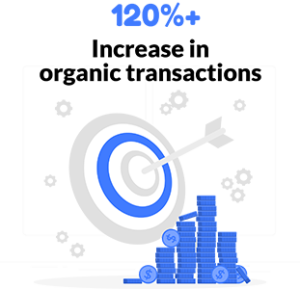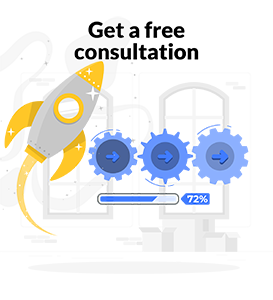What is a Google penalty?
Google penalties are a hot topic in the SEO world, and it’s no surprise why: They can be absolutely devastating to your site. The last thing you want is for your site to get penalized by Google. It happens by doing something wrong. So, if you haven’t been keeping an eye on this issue (or even if you have), it’s time to start. In this post, we’ll walk through what exactly a Google penalty is (and isn’t). Also, how to check whether your site has one of these penalties, what types of penalties exist, and how to avoid them in the future.
Why are Google penalties a concern?
Google penalties are a major concern for many businesses. It is because, they can have a serious impact on your website’s search rankings and thus, your business. If you have a Google penalty, it can cost you money, and customers. For example:
Your site may be penalized by Google and no one will find it when they search for keywords related to what you offer or sell. In addition, if someone find your site while searching for these keywords, they may not trust that it is trustworthy because of the poor ranking. So, it could lead them to another competitor.
A Google penalty could cause both organic traffic and paid advertising costs to skyrocket. This might result in higher costs in order to maintain current levels of traffic on top of paying more per click or impression. It is because of low-quality scores associated with poor rankings.
What types of Google penalties exist?
There are two types of Google penalties: manual and algorithmic.
An algorithmic penalty is a penalty automatically applied by Google’s search engine algorithm. Meaning there was no human involved in the decision. This usually happens when you do something that violates their webmaster guidelines. Needs also to be remembered that is considered an infraction. This type of penalty could be a result of your site being hacked or having malware on it, for example. You’ll know you’ve been hit with an algorithmic penalty when you see your ranking drop significantly after making changes to the site.
A manual penalty is when a person at Google has manually imposed the punishment upon them. It happens when you violate their webmaster guidelines. For example, if you purchased links in order to gain higher rankings. Or even, hired someone who engages in black hat SEO tactics or keyword stuffed your content excessively (more than three times per 100 words). When this happens, there will likely be more visible signs as well as words from Google explaining why they’re penalizing your website and how long it’ll last before being removed completely (if ever).
How can I check if my site has a penalty?
Now that we know what penalties are and how they’re enacted, let’s take a look at some of the most common ways to check if your site has been hit with one. If you’re worried about having a penalty on your website, this will help you determine whether or not it’s time to reach out for assistance.
Duplicate content: You can use Google’s Search Console to find any duplicate content issues. You need to go to the “Search Traffic” section under “Search Appearance.” You’ll see all of the different URLs that have been indexed by Google along with their corresponding status codes (200 OK means everything is good). Check for any pages that have less than 70% original content or more than 30% duplicated across two or more pages within one website. It will trigger a Google penalty, so you need to check them regularly.
Broken links: Link-building campaigns can be effective ways to build links and improve rankings. But, only when done right, it is worthy! If any of your links go down or point somewhere else besides where they should be pointing after being clicked on (like an error page), this may result in lost traffic and lower rankings overall. It is because search engines may penalize you for bad user experience factors (which include broken links).
How to avoid Google penalties?
Avoiding a Google penalty is all about being ethical and doing things the right way. Here are some tips for avoiding penalties:
Don’t use black hat SEO techniques. If you want to keep your site safe from a Google penalty, don’t use any of the black hat techniques mentioned above. These methods can cause problems with your site’s organic search performance. So, will result in a manual review by Google or even an algorithmic update that penalizes sites using these methods.
Avoid duplicate content at all costs! Duplicate content is one of the most common reasons why websites get penalized by Google. So, don’t risk it by copying and pasting content from other sources onto your own website without permission. It might seem easy enough to just post something on social media sites like Facebook or Twitter and expect it not to be seen as copyright infringement. Yet, these days there are plenty of tools available to detect plagiarism (including one built into Google Chrome). So, even if no one reports on it publicly. It’s still possible for bots like those running through Panda 4 or Penguin 4 algorithms today, to find out what’s going on behind closed doors!
Reversing a penalty
If your website has been penalized by Google, don’t panic. If you have duplicate content and are using the same keywords on every page, it’s likely that you’ll be penalized by the search engine. The best way to remove these penalties is by removing duplicate content or rewriting your original copy.
Google has also started penalizing sites that use exact match anchor text in their backlinks or internal links. This means that if someone links to your site with “best laptop brand,” then Google will see this as spammy behavior. It is because it looks like they’re asking for a specific keyword (in this case “best laptop brand”) rather than simply linking to an existing resource on your site.
The best way to prevent this from happening is through proper link-building strategies. Meaning, including relevant keywords in the anchor text but don’t go overboard with exact match anchors only pointing back at one article/page on your site (although there are exceptions where this might still be okay).
Not sure how Google penalties are happening?
If you aren’t sure how Google penalties are happening on your website, take a look at your most recent updates to your site. Check if you changed anything from advertising and SEO, etc. If something is different from the last time Google visited your site, it may be triggering this penalty or it could be something else entirely.
It’s also possible that the penalty has nothing to do with the actual issues on your website. It could be a competitor has built up enough links against you (or bad reviews) that they triggered an algorithmic penalty against you. This can happen even if their content is not as good as yours or if they don’t deserve better rankings than you. It just takes one person starting negative reviews about another business for this kind of thing to happen!
Conclusion
Hopefully, this post has helped you understand what a Google penalty is and how to avoid it! If you’re not sure why your site is experiencing issues, check out our other article on how to fix a Google penalty.
Curious about the ins and outs of digital marketing?
Subscribe to our email newsletter for the latest digital marketing insights, and also make sure to read our blogs. See you next time!






